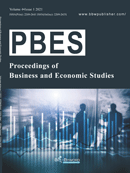Abstract
The increasing negligence of “blind lanes” on streets in metropolises such as Shanghai is an inconvenience to the blind population, therefore, alternatives should be explored. When walking on these lanes, there should not be any obstacles for the users, yet bikes can be seen parked there in addition to littered objects. This makes it potentially more dangerous to walk on them in comparison to walking on non-tactile paved lanes. An alternative to these lanes has been discovered which is a camera that is attached to a blind staff. This camera provides auditory feedbacks in regard to the user’s surroundings. Using YOLOv3 (You Only Look Once, Version 3), the software is trained using 140 images to identify three different classes which are blind lanes, waist-high obstacles, and dog feces, as well as the right direction of these objects. If the camera captures any of these three categories, it will provide and voice feedback, hence, warning the user. With this system, the blind can essentially have functional vision that would better guarantee their safety when walking on streets.
References
2018. China country report to world blind union Asia Pacific, general assembly, Ulaanbaatar, Mongolia. World Blind Union Asia Pacific. From: https://wbuap.org/archives/1416
Brownlee J, 2019, A gentle introduction to object recognition with deep learning. Machine Learning Mastery. From: https://machinelearningmastery.com/object-recognition-with-deep-learning/
Rezatofighi H, et al., 2019, Generalized intersection over union: a metric and a loss for bounding box regression. Computer Vision Foundation. From: https://openaccess.thecvf.com/content_CVPR_2019/papers/Rezatofighi_Generalized_Intersection_Over_Union_A_Metric_and_a_Loss_for_CVPR_2019_paper.pdf
Redmon J, Farhadi A, 2020, YOLOv3: an incremental improvement. University of Washington. From: https://pjreddie.com/media/files/papers/YOLOv3.pdf
Skalski P, 2019, Gentle dive into math behind convolutional neural networks. Towards Data Science. From: https://towardsdatascience.com/gentle-dive-into-math-behind-convolutional-neural-networks-79a07dd44cf9
Zhang Y, et al., 2015, Improving object detection with deep convolutional networks via Bayesian optimization and structured prediction. Computer Vision Foundation. From: https://openaccess.thecvf.com/content_cvpr_2015/papers/Zhang_Improving_Object_Detection_2015_CVPR_paper.pdf
